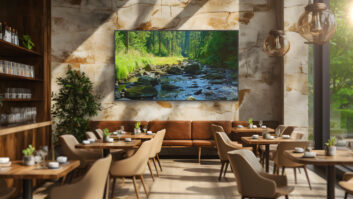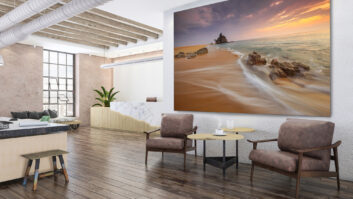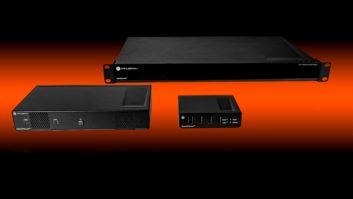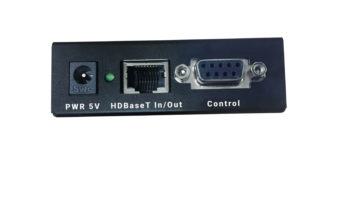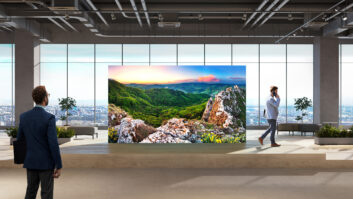
Audio Visual products and solutions had a good year in 2018. It’s an exciting environment with growth across all our market segments, from interactive displays used in the office for team work, to digital signage displays used to entertain and inform in retail and leisure, transport hubs and conference centres. So, an overall prediction is continued growth – in the following directions.
Displays will improve the meeting environment
One of the main trends we have seen over the last few years is people investing in displays to help them work together better. With face to face meetings on the decrease, this might seem counter-intuitive, however, it appears that having fewer physical meetings makes us value them more.
Face-to-face meetings, when they do happen, are now so precious that businesses want to make those experiences the best they can be. So, when people do come together, they want an easy-to-use interactive screen to share content with and to work together on.

A rise in ‘virtual’ face to face meetings has also increased demands for screens. Video conferencing is growing rapidly according to many studies, most recently from Forrester Consulting commissioned by Polycom, now part of Plantronics. They found that three quarters of decision makers said video conferencing had increased in the past two years.
In 2019, displays will not only make sharing information easier, they will also improve the meeting area itself. I see a future where screens will have sensor technology built-in. For example, a display would detect when people enter the room and switch on automatically. A display will also monitor the temperature of a room, the air quality and how often it is used. This will help companies to get important information about their meeting spaces and feedback to optimise how the spaces are used.
We are introducing a Windows Collaboration Display next year that, using IoT sensors, monitors your environment and will help to make those conditions optimal. It’s the next evolution of the interactive display, a smart-building ready display that explores the potential of IoT to make our meeting rooms more productive places.
Display resolution will make new applications possible
While we see that 4K is now becoming a standard resolution for many, 8K is the next logical step towards having a display that shows images that are as close as possible to reality.
We believe that 8K will develop in the same way as 4K has. After 4K cameras entered the market, editing equipment became compatible with 4K, and data compression/decompression technology was established. This led to the shift from 2K to 4K mainly in the large-sized screen. Sharp wants to increase the demand of 8K in the same way by building the 8K ecosystem of camera and display, thereby improving the environment for 8K film to be spread.
Japan is leading the way in greater resolutions with the start of 4K and 8K programming by NHK, Japan’s national broadcaster, and commercial TV stations in December. And many other broadcasters around the world have started small or large-scale trials of 8K.
However, 8K isn’t only a higher resolution consumer product, it’s also the basis for many new business applications, that have huge potential to improve our lives. For example, in medicine, being able to capture more detail means being able to diagnose and operate on patients remotely.
In commercial applications, 8K provides opportunities for advertising and design agencies. In the automotive world we are already seeing companies trialling 8K cameras to create hyper real images and films of car prototypes. This means that advertising can be developed in tandem with production, saving on time to market.
Displays will blend into the environment
Screens will continue to play a central role in our everyday lives, but they will become harder to spot. From thinner screens to different frames, they will start to merge more with their surroundings.
I believe we’ll see more non-conventional screens in mainstream environments soon, for example, flexible displays that are more like a digital poster rather than a screen. This also opens the possibility to mount screens on surfaces that are not flat.
Ultimately, I see a future where displays are completely integrated into the environment they’re in, as if part of the architecture. Either inside or outside a building, screens will almost be a part of the building itself.
Interacting with screens with a mobile device will be also more commonplace. For instance, being able to push content to, or receive content from, a screen will be super-easy. This will give people the ability to take information from signage, such as displays in shopping malls or airports, and take it with them as they roam around.
Sharp will attend ISE in February 2019 (Hall 12, stand E100). Visit the stand to see Sharp’s Windows Collaboration Display with IoT sensors, and Sharp’s Innovation Area, to experience future products including an 8K camcorder.


